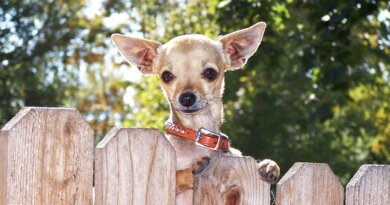What It Is and What You Need To Know – Top Dog Tips
Different breeds, different dog temperaments. How can dog temperament help determine which pooch is best for your home?
Almost all households worldwide keep dogs as pets. In fact, we humans have bonded with them for years to the point that we call them now as fur babies.
We become fond of them that we often buy or adopt puppies without realizing what goes into owning one. Worse, corrupt people breed dogs with no regard for health or temperament.
Before committing to the lifetime of the dog, gather information first to see compatibility.
Decide whether you have the patience to manage passive dog breeds or the skill to control the aggressive ones.
Although members of the same species, breeds vary not just in appearance. Dogs are individuals, just like people, and they don’t all have the same temperament.
Dog Temperament: What Is It?
Canine temperament is the dog’s personality, disposition, or nature.
It is what makes a certain breed unique not only for the dog’s appearance. Size or gender has nothing to do with the behavior.
Breeds recognized by American Kennel Club have national parent clubs to describe each variety’s ideal temperament.
The breed isn’t the only factor that goes into the dog’s nature. It’s not just the genes too but also the surrounding that affects how it perceives people and other animals.
Calm dogs, for example, are expected to maintain composure. But, they can make great canine friends with proper training and socialization.
Dog Temperament as Described in the Breed Standard
Dogs sorted into seven breed groups are expected to conform to the canine breed standard.
The breed group can indeed be a helpful symbol of dog temperament. But, we cannot dismiss the fact that every dog is unique.
We cannot generalize them within the seven dog groups.
The following are a few of the dog breeds with the assumed behavior.
Sporting Group
A good example is the Vizsla dog breed which is known to be lively and gentle.
It may be affectionate and sensitive but fearless with protective instincts. Vizsla dogs are not shy, timid, or nervous.
Hound Group
A good example from this breed group is the Beagle dog breed which is friendly and curious.
This loyal companion works cheerfully. Beagle dogs are generally easy-going.
Terrier Group
The American Hairless Terrier is an energetic and alert dog breed. It is curious, and smart and should not show aggression or extreme shyness.
Working Group
One example under the working breed group is the Cane Corso which is protective of its property and owners.
It is brilliant and, thus, can be easily trained. Not only is it docile but also affectionate with family.
Toy Group
One popular example from the toy group is the Papillons which are happy, alert, and friendly. They are not shy or aggressive.
Herding Group
Another dog breed under this group is the Collies which are loving, devoted, and sensitive. They are intelligent and hence easy to train.
Non-Sporting Group
A dog breed belonging to this group is the American Eskimo dog which is playful, perky, and smart. These friendly furry friends are protective but don’t threaten to bite.
Why Take the Dog Temperament Test?
Launched in 2019, the AKC Temperament Test rates the dog’s reaction to various stimuli. The process can give information about your dog’s behavior.
The purpose of ATT is to educate dog owners about the temperament of their breeds.
For purebred dogs, taking the test allows you to find out how close your dog’s actions are to the breed standard.
For mixed breed dogs, you will have an insight into the attitude of an individual dog.
If the dog passes the ATT, the owner may apply for the title certificate and have the dog’s record appear on AKC’s title record.
Dog Temperament Test
Founded in 1977, the American Temperament Test Society, Inc. promotes uniform temperament evaluation of dogs. This national non-profit organization was formed to work for the betterment of all breeds of dogs.
The test was developed to evaluate and assess our canine companions’ reactions to everyday life situations and experiences.
To conduct it, a casual walk is done through a park or neighborhood. During this walk, the dog encounters visual, auditory, and tactile stimuli.
The dog’s ability is examined to determine threatening and non-threatening circumstances.
It also focuses on and measures different aspects of temperament such as stability, shyness, hostility, friendliness, vigilance, and protectiveness.
The test consists of ten subtests divided into five subcategories:
Behavior Toward Strangers
Subtest 1: Neutral stranger — To assess the dog’s reaction to passive socialization and the dog’s protective instinct.
Subtest 2: Friendly stranger — To rate the dog’s active social skills.
Reaction to Auditory Stimuli
Subtest 3: Hidden Noise — To test alertness and curiosity.
Subtest 4: Gunshots — To measure the dog’s recovery response to a sudden noise.
Reaction to Visual Stimulus
Subtest 5: Umbrella — To check the dog’s reaction to a sudden visual stimulus.
Reaction to Tactile Stimuli
Subtest 6: Plastic Footing — To rate the dog’s sensitivity to the unusual footing.
Subtest 7: Wire Footing — To measure its behavior and test its ability to recover from the fear of unusual footing.
Self-Protective/Aggressive Behavior
Subtest 8: Non-Threatening — To check the dog’s alertness to an unusual situation.
Subtest 9: Threatening — To judge the dog’s ability to recognize when an unusual situation turns into a provocation.
Lastly, Subtest 10: Aggression — To evaluate the dog’s protective instincts.
The evaluator will score the dog on his performance.
He fails the test whenever he shows unprovoked aggression, panic without recovery, or strong avoidance. If he passed, a certificate will be provided.
Many shelters perform the dog personality quiz before putting them for adoption.
This lets them identify dogs with behavioral problems and helps increase the rate of successful adoptions.
Even shops have puppy aptitude tests to evaluate litters and help buyers select their puppies. They will appreciate your thoroughness because they’d know you’d be a perfect dog owner.
Does Dog Temperament Matter?
Yes, it sure does.
It is the most important factor to consider before getting a puppy. When you understand the dog’s behavior, you would know if he will be easy-going, independent, or fearful to be in a household.
You may be looking for a certain color or size, but the dog breed personalities are what matter the most in dog ownership.
Choose a dog that matches your lifestyle. Are you athletic to have a running buddy or perhaps you prefer a couch potato companion?
While some suit apartment living, others need a big space to run in and burn off bountiful energy. Some dogs are open to strangers, while some are preserved.
So, you see, a dog’s nature is vital in making an informed decision.
Knowing the behavioral patterns that existed since puppyhood will let you figure out what to expect and how you can influence it.
Genes have a powerful impact on temperament but you can socialize your pup and provide proper training.
Types of Dog Temperament
Some are very lively and driven, whilst others are very relaxed. Their reactions would differ as well towards people they meet each day.
Not just on how he interacts, but the behavior also influences the activities he enjoys and likes to participate in.
These differences in temperament are affected by how the dog is raised, or simply formed by his genes.
Independent
Although the dog appreciates time alone, it does not necessarily mean that he does not bond with his person.
Many breeds are adoring but are also content with their own company. They don’t demand attention and are not clingy.
Dependent
This poor baby usually suffers from separation anxiety. He fears the most when you are out of sight.
Dependent breeds want to be the center of attention. They will tirelessly follow you from room to room because they thrive in human interaction.
Active
When you have an active lifestyle, go for a perky dog that is happiest to join heart-pumping activities. This pet seeks adventures and outdoor experiences.
Couch Potato
If your idea of a great day is to chill, then this could be the perfect match for you! Unlike dogs with high spirits, this pooch will be more than happy to snuggle up and lie down with you.
Easy-going
This dog has a merry personality and will fit novice owners. He would jump up for attention and wag his tail while wanting you to pet him.
This fur baby exhibits excited behavior, welcomes attention, and is very eager to play.
Fearful
A fearful dog usually cowers in the corner and hesitates to interact. It is possible that he has suffered abuse or trauma, or lacks experience at a young age.
This dog has low self-confidence and few coping skills. He could bite simply out of fear and be easily startled by the loud noises of the outside world.
Aggressive
Some have all-around friendliness while others are assertive or even attack other dogs. They may come in barking and lunging while showing their teeth.
Owning an aggressive dog is a huge responsibility. This requires patience and effort on the part of the owner for the dog to grow up friendly and gentle.
If not properly trained and socialized, the dog may not only guard your home against strangers but also against your friends and even family members.
Neutral
This well-balanced canine companion doesn’t look for trouble. He is not timid but calm when interacting with the other dogs.
If there’s no one to play with, he is content to find non-destructive ways to amuse themselves.
RELATED: 20 Most Aggressive Dog Breeds
Raising a Friendly Dog
Some breeds are naturally friendly and they are likely to make safe companions for children.
During the puppy’s development, his experiences will have a big impact on how he approaches life.
If he has positive encounters, the more likely he will improve his social skills — avoiding signs of aggression or shyness.
Practice his canine manners with other well-behaved dogs. You may sign up for kindergarten classes that allow pups plenty of time to learn, play and burn off energy.
Expose him to other dogs to be friendly over time. Remember, his early experiences can shape his personality as an adult.
FAQs about Dog Temperament
What affects dog temperament?
Lineage may influence temperament, but the environment plays a major role in shaping his approach to the world.
Personality is developed but affected by socialization, training, and experiences.
With positive experiences, a puppy grows up to have an ideal temperament. It is also important to note that when a dog feels threatened, it may respond with aggression.
How do you test a dog’s temperament?
A dog temperament assessment starts with an introduction to the environment.
You either go for a walk or into a play area to evaluate if a dog will play and interact well with other dogs.
An evaluator checks for signs of aggression and other issues that could affect the dog’s ability to safely interact with others.
How do you know if it has a friendly dog temperament?
Friendly dogs approach you while wagging their tails, curve their bodies, and don’t maintain eye contact. They come up to you and try to lick your face.
A pleasant and gentle underlying nature or personality is what makes a friendly dog.
Dog Temperament Summary
Breed temperament is how a dog behaves in certain ways — generally the attitude toward people and other animals.
While they have the same basic canine instincts, understanding dog temperament can help you choose the right breed for you. That way, you can also control the action and train your dog to correct any behavioral problem.
It would be worth considering shared traits and characteristics for compatibility. When it comes to human-dog interaction, owners matching their dogs in activity preferences have a better relationship.
Take your personality and experience into account in choosing your new pooch.
Each animal is unique but its behavior can be influenced by exposure to distinct surroundings, living situations, and interactions with people. Over time, it can be changed even during adulthood.
Take your time and make the right choice fit for yourself and your family.
If you want to give yourself the best chance of a puppy with a desirable temperament, not only should you provide care for it, but you should pick a breed influenced by responsible breeding practices.
To be fair to your pet, do your homework to find the perfect one, and don’t make this decision lightly. Remember, this is a lifetime duty.
If you aren’t his best match, then he deserves to find a family that is.
READ NEXT: Cocker Spaniel Dog Breed Profile
Related












